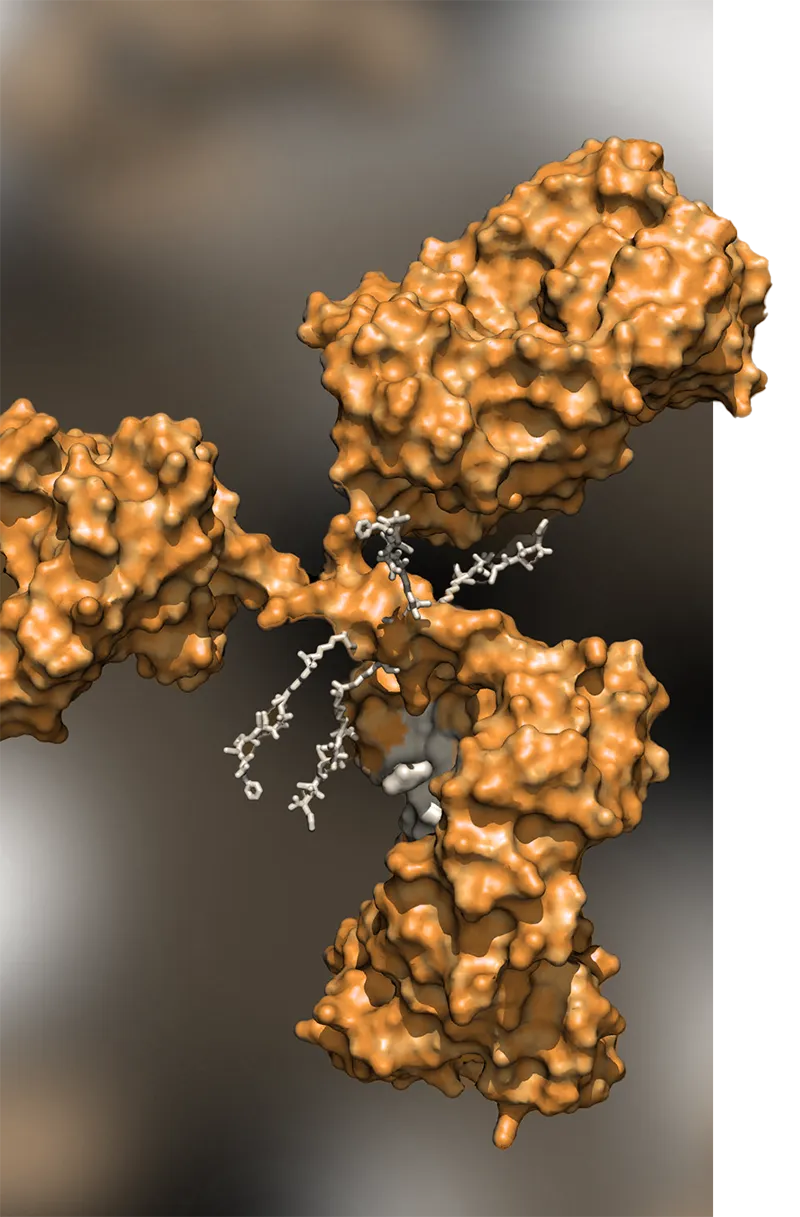Learn about our antibody drug conjugate development and ways patients may qualify to participate in our clinical trial.



A Multi-center, Open-label Phase 1/1b Dose Finding, Safety, and Pharmacokinetic Study of MBRC-101, an Anti-EphA5 Monomethyl Auristatin E (MMAE) Antibody Drug Conjugate, in Advanced Refractory Solid Tumors
This is a first-in-human, open-label, Phase 1/1b study in patients with advanced metastatic solid tumors refractory to standard treatment, including non-small cell lung cancer (NSCLC) and triple negative breast cancer (TNBC).
Phase 1 will identify potential optimal biologically relevant doses (OBRD) and the maximum tolerated dose (MTD) of MBRC-101 at one or more dosing regimens.
Phase 1b will evaluate the safety and preliminary activity of MBRC-101 at clinically relevant doses in TNBC, NSCLC and other solid tumors. Phase 1 and Phase 1b will characterize single and multiple-dose pharmacokinetics profiles of MBRC-101.
For more information about the MBRC-101-001 clinical trial, and to review patient eligibility criteria, visit clinicaltrials.gov (identifier: NCT06014658)

EphA5 has been selected as an ADC target because of its high expression in various solid tumors, including triple negative breast cancer (TNBC), non-small cell lung cancer (NSCLC), colorectal, gastric, pancreatic and hepatic cancers. EphA5 is differentially expressed (i.e., found more often) in tumor cells compared to normal cells.
Pre-clinical data has shown the ability of EphA5 to bind antibody and to internalize the antibody with its conjugate drug into the cancer cell. Robust pre-clinical efficacy in vivo, using patient-derived tumor xenograft (PDX) models, has been documented (download data below for more details).
EphA5 is a transmembrane tyrosine kinase receptor highly expressed in several malignant solid tumors. In lung cancer, EphA5 is associated with tumor survival and possible radiation resistance (Staquicini FI et al., The Journal of Biological Chemistry (2015) 290:12, 7345–7359).
A highly targeted ADC may reduce side effects compared to conventional chemotherapies.
MBRC-101, a first-in-class therapy with a new mechanism of action, provides doctors and patients with new options for cancer treatment.
MBRC-101 provides a potential treatment alternative for solid tumors with significant unmet clinical need.
For more information about MBrace’s products or programs please contact us at: